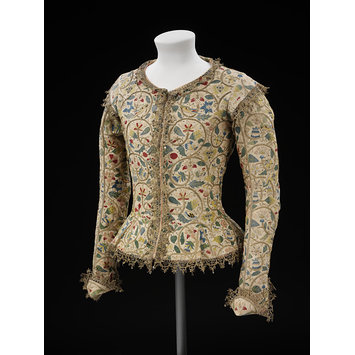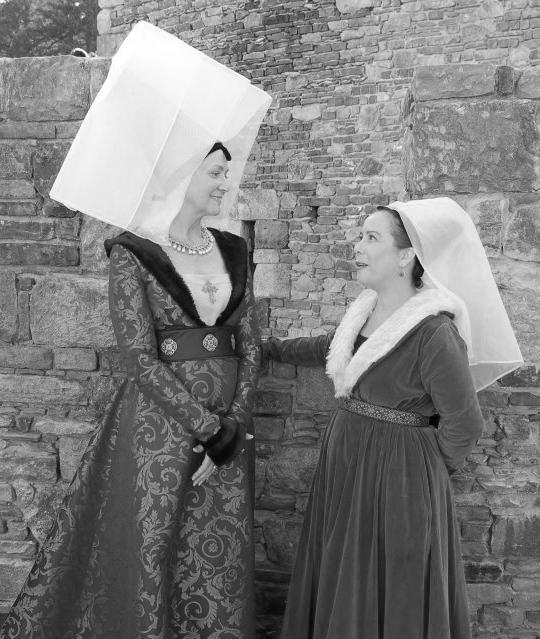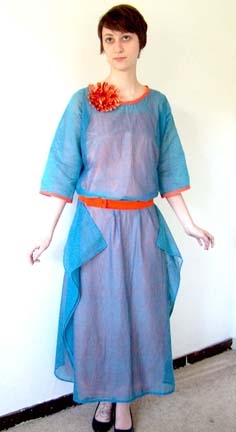Book Review: Seventeenth-Century Women’s Dress Patterns, Book I

by Diana Habra, First published for the November/December 2011 issue of Finery

This book, edited by Jenny Tiramani and Susan North and published by the Victoria & Albert museum in London, is the first of the Pattern Book series and builds on the publications of Janet Arnold, Norah Waugh, Linda Baumgarten, and several other prominent historical clothing experts. In addition to the standard descriptive costume information, this book goes beyond and shows us color photos of the clothes mounted on proper dress forms, shows many great close-up details, and provides thorough diagrams showing construction sequences. Several garments have x-rays that reveal additional details of construction and/or alteration. When possible, comparison portraits or drawings are included for emphasis.
First is a list of tailor’s tools with drawings of each and descriptions of how they were used. Techniques of sewing by seamstresses and tailors are also explained in detail. Methods of fabric pinning, basting, & marking are mentioned and examples from the book are pointed out. Embroidery is discussed as the main decorative technique of the time, where metal and silk threads play the most prominently.
The next section shows (in easy to follow photographs) embroidery, knitting, and sewing techniques from the period. Each type of stitch is shown with a photograph and description that is easy to decipher and follow. This section alone is probably worth the price of the book ($65 or less-depending on where you buy)! It is comprehensive and will de-mystify hand stitching for many people. And unless you have been hand stitching for over half of your life, it will probably give you more stitches to add to your repertoire. It is, in a word, fabulous!
The next sections are listings of individual, existing garments which are analyzed, photographed, and explained in detail. Patterns are drawn out for you with the embroidery layout (on a graph-style grid) if applicable. Then a step-by-step construction sequence is provided so that you can easily assemble the garment, embroider it, and sew it using period stitches. In one case, a waistcoat shows conjectured layouts of the linen lining vs. silk lining. There is also a reconstructed waistcoat shown that is based on the conclusions of the authors.
Items shown in the book are: three linen or silk waistcoats, a 1630’s slashed ivory silk satin bodice, (with xrays), a knitted silk waistcoat, an embroidered linen mantle with bobbin lace, a linen smock with bobbin lace insertion, a linen hood trimmed with English bobbin lace, an embroidered coif and forehead cloth, a linen band & cuffs, an embroidered partlet and matching sleeve panels, a linen kerchief, and two pairs of embroidered gloves.
Throughout the book are amazing close-up photos of the garments, and specifically details of the garments of the kind that we as historical costumers need to see. But this time the photos are bigger and in color as opposed to what we often see in other books. You may want to keep a handkerchief nearby as you look through the book so it doesn’t get wet.

If the Janet Arnold “Patterns of Fashion” series of books are like the best ice cream, then this book is like the best ice cream sundae with chocolate sauce, whipped cream, and a cherry on top. It is well worth adding to your library whether it is your period or not. As I said, the clearly outlined stitches and knitting section is amazing in and of itself. And let’s hope that this is only the first in a very long series!



Leave a comment